Any sharp objects when not disposed properly can be dangerous to humans as well as nature. One of the sharp objects that we dispose of very often is razor blades. One day my sanitation worker came with his hand bandaged, when asked about the reason he said that he got hurt with a razor blade while bifurcating the trash. After knowing about these incidents I started observing that most of us do not dispose of the blades properly as can be seen in landfills, trash, etc.
Razor blades are a vital part of many grooming routines. However, tossing them in the regular garbage can be dangerous. It’s crucial to dispose of them safely and responsibly. But why is proper disposal important? How can you do it correctly? Can razor blades be recycled? And where should you avoid throwing them away?
I am writing this article to guide you on how to dispose of the blades properly and to request you to become responsible towards nature as well as humankind.
Why Proper Disposal of Razor Blades Matter?
- Razor blades, being sharp, can cause injuries if not disposed of properly.
- Improper razor blade disposal is a threat to sanitation workers and adds to environmental pollution.
- When razor blades are thrown away improperly, they can pollute the soil and water in landfills, harming nature.
Razor blades, designed to be sharp for effective hair removal, can cause harm if mishandled or disposed of improperly. Proper disposal is needed for both razors and long-lasting ones. Safely disposing of them is essential to protect both people and the environment.
This highlights the importance of knowing the correct disposal methods.
How To Dispose of Razor Blades for Single Blade and Multi-Blade
3 Steps for Single Blade Disposal
- Cover the blade securely with several layers of thick paper or cardboard
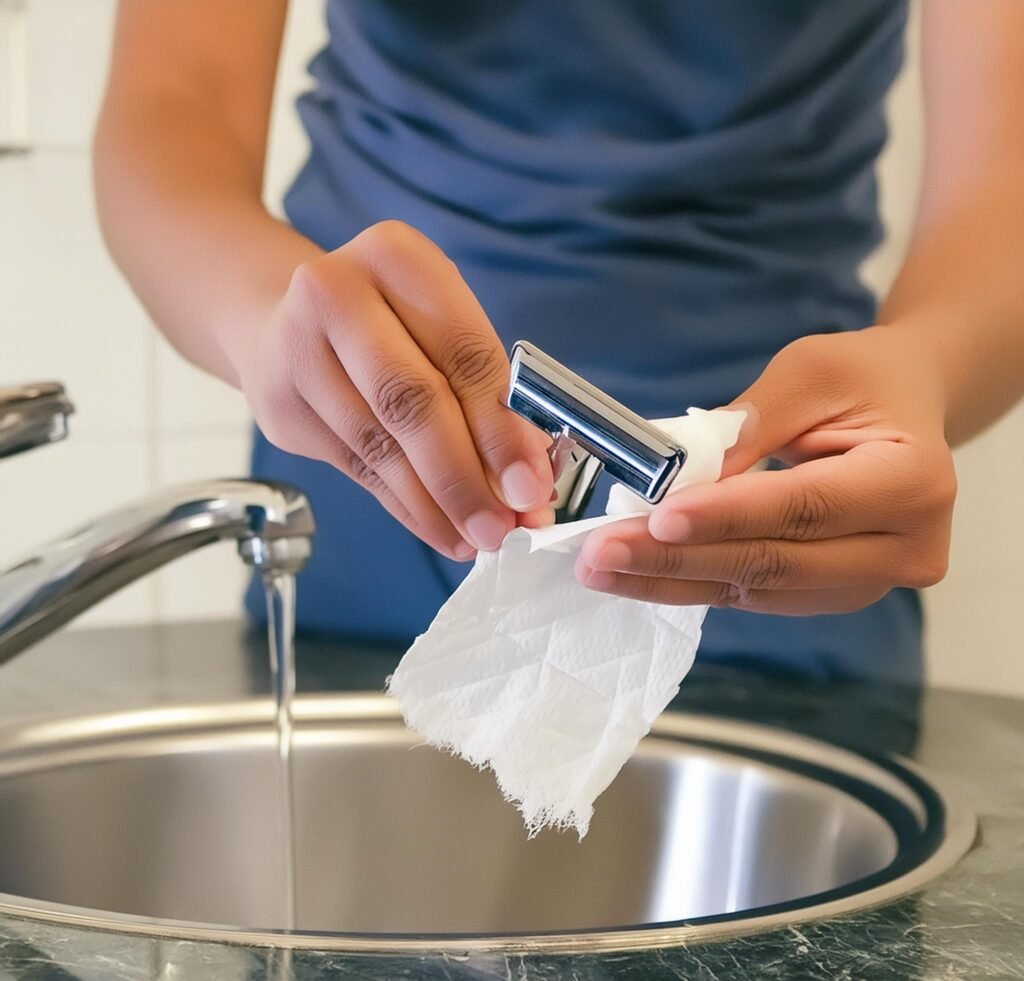
Wrap the blade in multiple layers of heavy paper or cardboard for secure containment. Use duct tape to conceal the blade thoroughly. Optionally, add extra cardboard layers for added protection. Ensure the blade remains tightly packaged to prevent it from loosening in the trash.
- Label the packet
Write “sharps disposal” or “used razor blade” on the taped-up packet using a permanent marker. Label both sides of the packet to ensure visibility. Use bold letters for clarity, especially in shared environments like homes or workplaces.
- Throw the labeled packet in the dustbin
Place the labeled packet in with the regular garbage. Ensure compliance with local regulations before disposal. You can visit your local government’s website or contact the sanitation company.
6 Steps for Multi-Blade Disposal
- Buy a particular razor disposal container
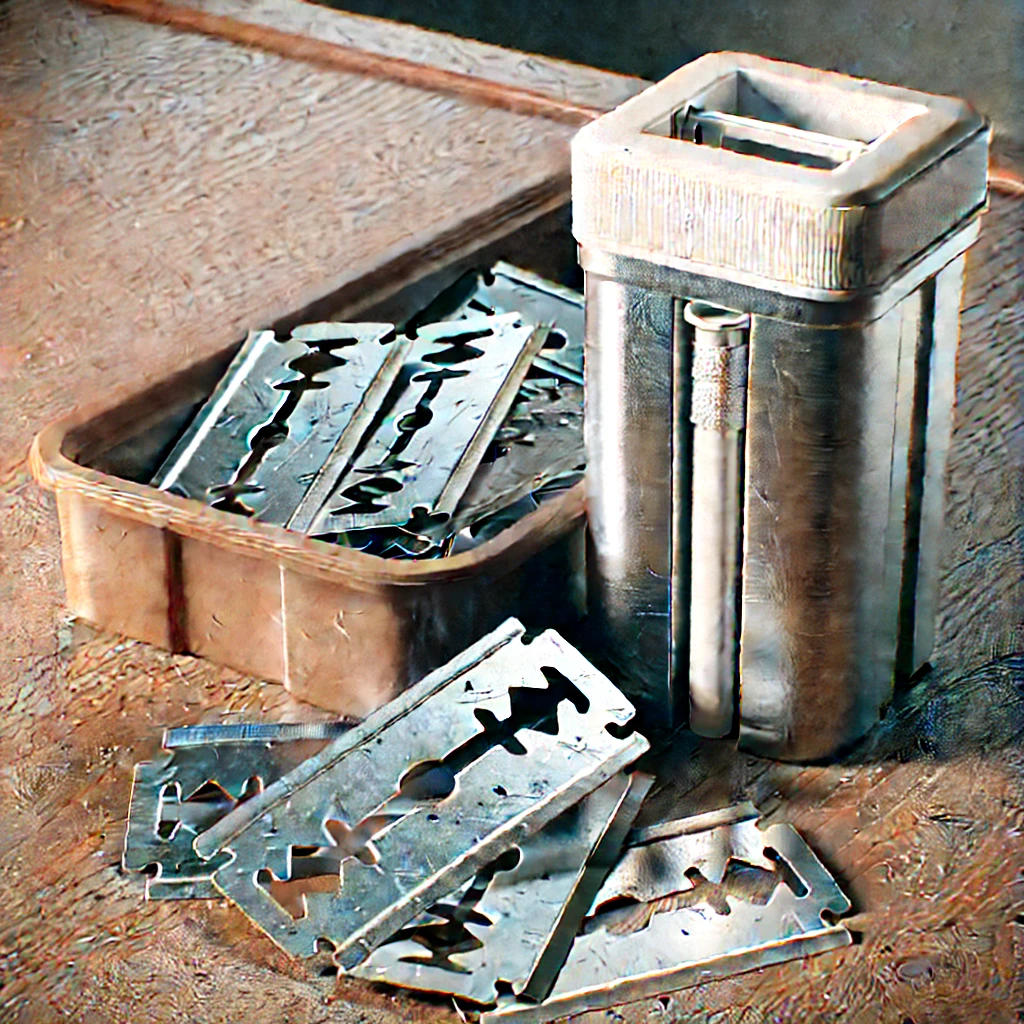
Get a generic sharps disposal container for the blades from your local store or online. These containers usually have a tiny aperture on top with a lid that can be used to drop sharp objects.
They are labeled with clear biohazard symbols and are generally red to help draw attention to them. Needles, thumbtacks, and other potentially dangerous objects can also be disposed of in these containers.
- Make your disposal box for razor blades
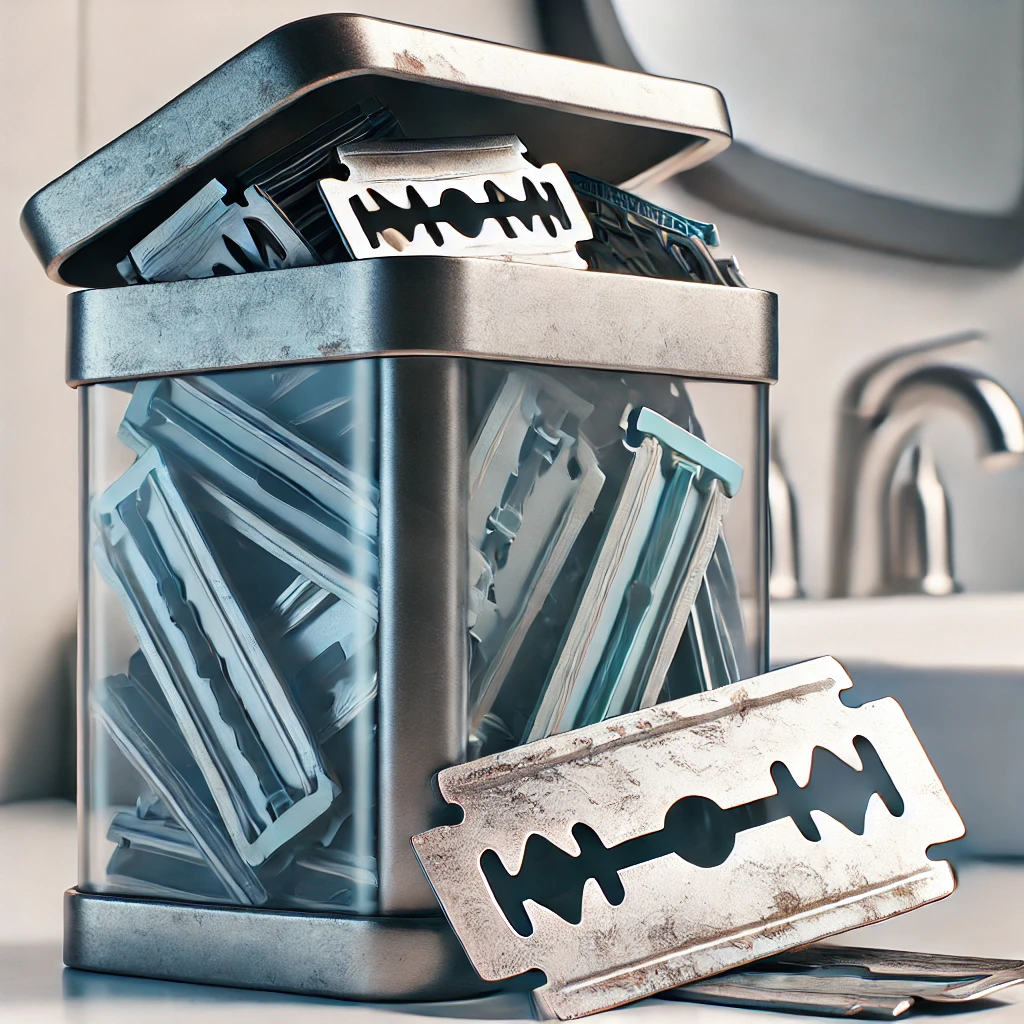
If a specially made sharps container is not available, designate a tiny, empty container as a “blade bank”. Select a waterproof, non-breakable material that has a tight-fitting cover. Indicate what’s inside the container by clearly labeling it “old razor blades” or something that can clearly tell you its contents.
Choose a plastic safety-capped pill bottle or a glass jar with a screw-on cover. Another option is to use an aluminum can with a slot cut in the top for liquid drainage. Steer clear of thin plastic or ceramic containers, as the blades may puncture them.
- Use the original packaging’s built-in disposal compartment to insert old blades
When purchasing new blades, manufacturers frequently include a built-in trash compartment at the bottom of plastic containers. This compartment usually has a slot on the side where old blades can be inserted.
Only use this approach for the blades that were originally packaged. If the blade packing has a disposal compartment, there is no need for an additional one. Keep the container upright to prevent the blades from falling out. Other kinds might not fit correctly.
- Store the disposal container properly
The disposal container should be kept out of the reach of kids and animals in a safe place. Check that the container is sturdy and, even with a secure lid, cannot fall or topple over. If the sharps container is kept in a public or office area, consider placing it next to the trash can.
- Tape and label the container
When the blade container is filled up, be careful to tape it shut firmly. To securely fasten the lid onto the container, use duct tape. Take caution not to use duct tape to hide any biohazard labels on specially designed sharps containers.
- Throw away the sealed container in the dustbin
If local laws permit, you may dispose of conventional garbage in a labeled and tightly sealed sharps container.
Sealed sharps containers may be accepted and disposed of by unquestionable authorities, pharmacies, and independent organizations.
Where Not to Dispose of Razor Blades
It’s important to know where not to dispose of razor blades. This prevents potential hazards when considering disposal methods. Here are the places where you shouldn’t be disposing razor blades or any sharp objects:
- Regular Trash: Avoid throwing loose razor blades into regular trash to prevent risks to sanitation workers and anyone handling garbage.
- Toilets or Drains: Avoid flushing razor blades down toilets or disposing of them in sinks. This prevents plumbing problems and environmental harm.
- Public Spaces: Dispose of razor blades responsibly in public spaces. Do not leave them in public trash bins or locations where they could harm others.
Can Razor Blades Be Recycled?
Recycling razor blades is challenging due to their small size and sharp edges. It can damage equipment and pose hazards to workers. Despite these challenges, options still exist:
- Special Recycling Programs: Look for companies and recycling programs specializing in metal blade collection and recycling. Search for dedicated programs in your area or participate in manufacturer take-back programs. For example, Gillette razor products can be recycled through the TerraCycle program.
- Scrap Metal Recycling: Some scrap metal recyclers may accept more significant quantities of blades. Ensure they’re securely stored in a metal container and verify acceptance with the recycler beforehand.
Conclusion
Proper disposal of razor blades is crucial for safety and environmental protection. Razor blades should not be thrown loosely in regular trash, flushed down toilets, or left in public spaces. Instead, secure single blades in thick paper or cardboard and label them before disposal.
For multiple blades, use a sharps disposal container or make a safe disposal box. Recycling options include special programs and scrap metal recyclers. Always check local regulations for disposal guidelines. Safe disposal methods protect people and the environment, ensuring razor blades are handled responsibly.

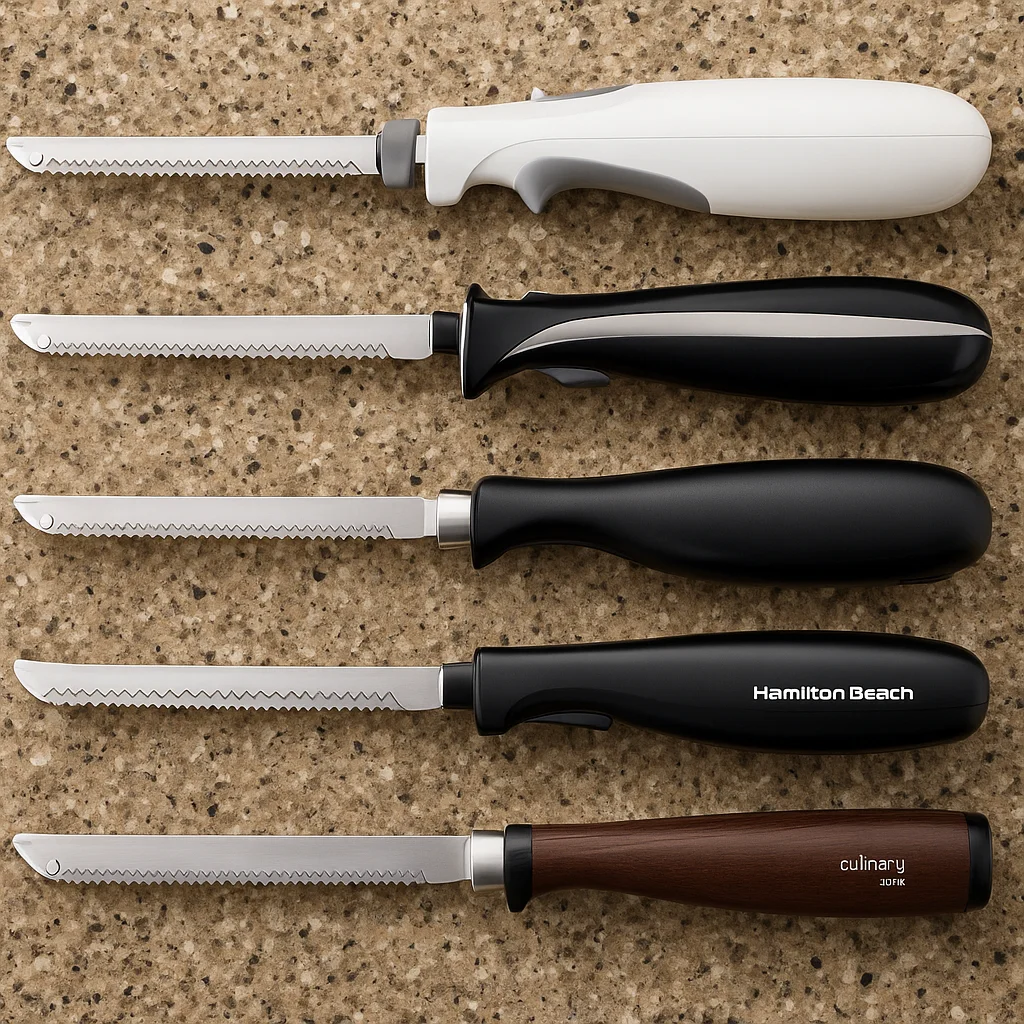

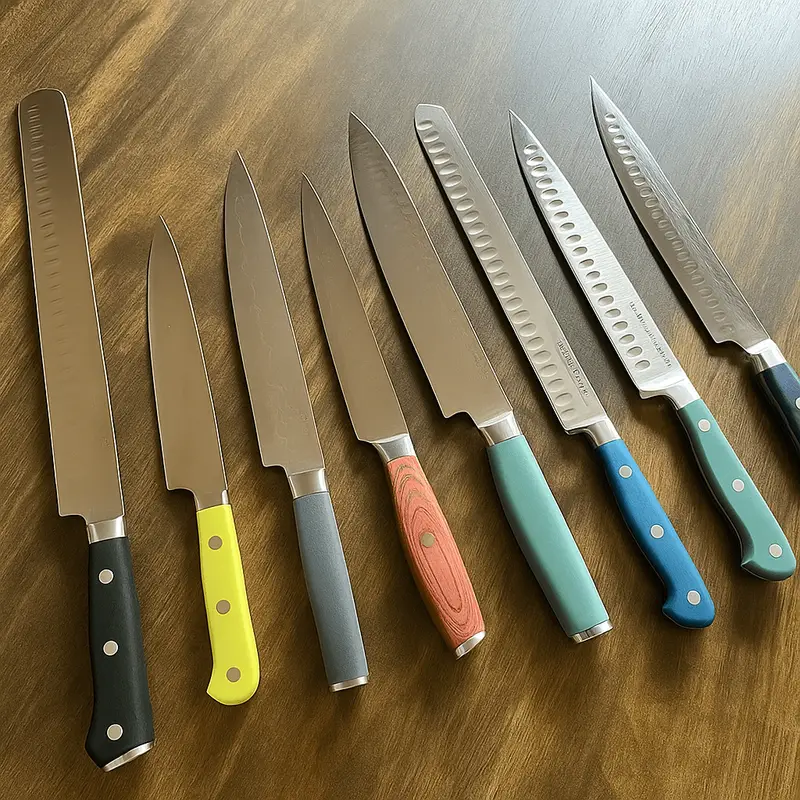
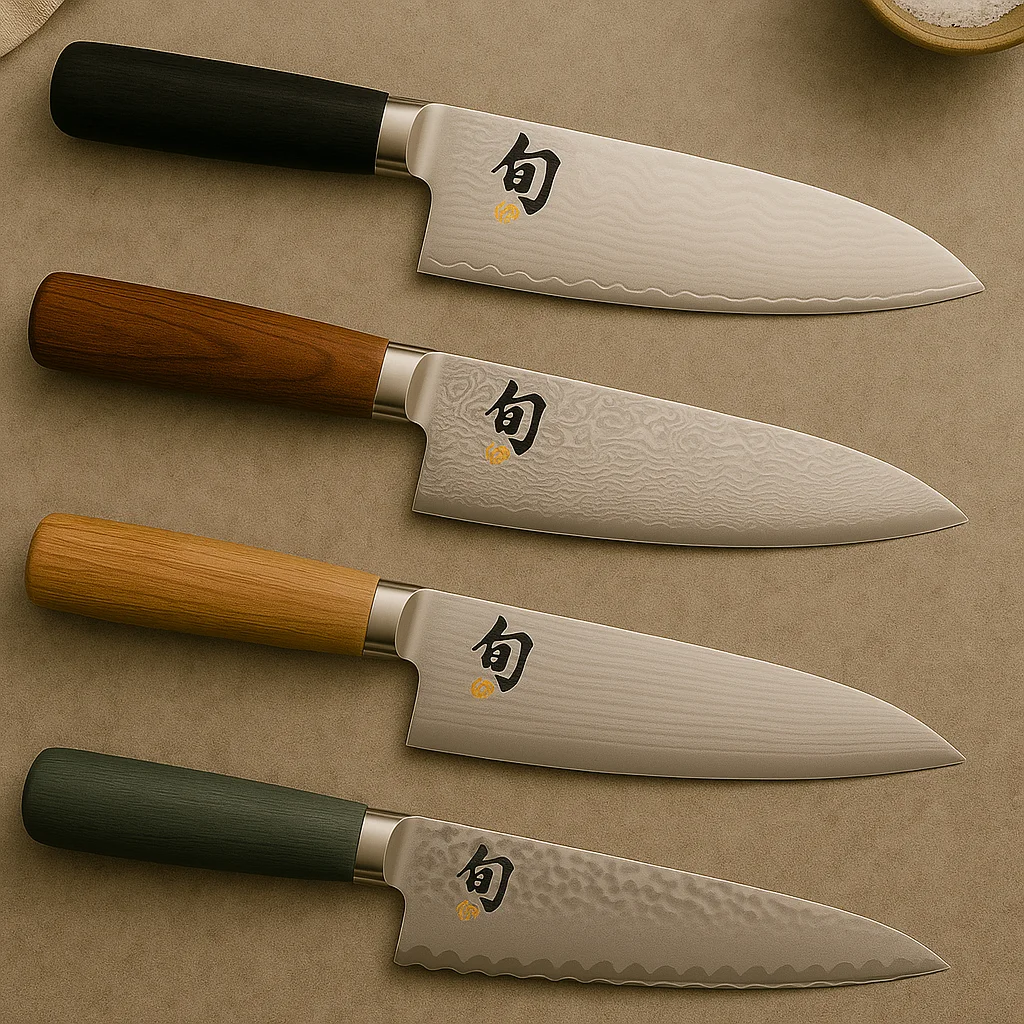
Leave a Reply